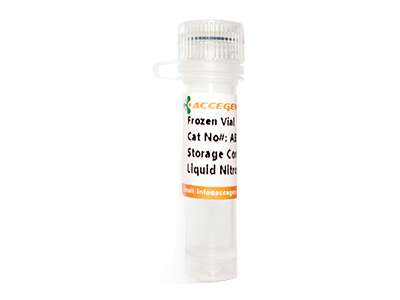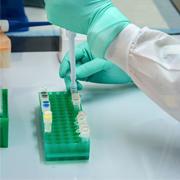Home > Products > Tumor Cell Lines > Human Tumor Cell Lines >
COR-L105 |
||||
|---|---|---|---|---|
| Product Name |
COR-L105 |
|||
| Price | Get Quote | |||
| Product Code | CORL105; COR-L 105 |
|||
| Cat.No |
ABC-TC0178 |
Species |
Human |
|
| Size/Quantity |
1 vial |
Biosafety Level |
1 |
|
| Shipping Info |
Dry Ice |
Storage |
Liquid Nitrogen |
|
| Description |
Why choose COR-L105 from AcceGen? AcceGen offers COR-L105 with its excellent viability. COR-L105 undergoes meticulous quality control protocols, encompassing comprehensive evaluations of sterility, viability, identity verification, and growth attributes. These standardized procedures ensure that COR-L105 is a reliable and valuable asset for a wide range of scientific investigations facilitated by AcceGen. |
|||
| Disease | Lung Adenocarinoma |
|||
| Source Organ | Lung |
|||
| Recommended Medium And Supplement | RPMI 1640 + 10% FBS |
|||
| Citation Guide |
When you publish your research, please cite our product as “AcceGen Biotech Cat.# XXX-0000”. In return, we’ll give you a $100 coupon. Simply click here and submit your paper’s PubMed ID (PMID). |
|||
| Application | FOR RESEARCH USE ONLY COR-L105 is a valuable tool for identifying key factors in the etiology, diagnosis, and prognosis of non-small-cell lung cancer. By utilizing COR-L105, researchers can delve into various aspects, such as the impact of histone deacetylation on cancer cell behavior. The application of histone deacetylase inhibitors can effectively suppress histone deacetylation in COR-L105 cells and induce the apoptosis, involving the activation of CIP/KIP families. Otherwise, the analysis of tumor-associated glycolipids on the cell surface holds the potential in characterizing tumor cells and assessing their level of malignancy. In the case of COR-L105, it has been observed that this cell line exhibits low levels of 9-O-acetyl ganglioside GD3 expression. Given that brain metastasis is a prevalent occurrence in non-small-cell lung cancer (NSCLC), COR-L105 presents an opportunity to explore its propensity for adherence to brain-derived endothelial cells. Through studying this interaction, researchers can gain insights into the mechanisms underlying the transmigration of circulating cancer cells into the brain parenchyma. This investigation may provide valuable knowledge about the invasive behavior of NSCLC and contribute to the development of strategies for managing brain metastasis in patients. |
|||
| Growth Conditions | 37 ℃, 5% CO2 |
|||
| Cell Type | Epithelial-like |
|||
| Growth Mode | Adherent |
|||
| Product Type |
Human Lung Cancer Cell Lines |
|||
| Product Image |

|
|||
- ONLINE INQUIRY
- PRODUCT REVIEWS
Fill out a request in the form below and we’ll get back to you within 24 hours with a quote.






 COR-L105 is a non-small cell lung cancer (NSCLC) cell line derived from the pleural effusion of a male with lung adenocarcinoma. Cells grow partially attached and in suspension, and do not form a confluent monolayer, so they can be cultured in RPMI1640 or DMEM with 10% FBS and other factors as experimental requirements. COR-L105 has a subculture ratio of 1:3-1:6, but it is a relatively slow-grown cell line with a 40-hour doubling time. At 24 hour and 48 hour, COR-L105 shows almost the same cell number; at 72 hour, the cell number is double, as seen in colorimetric cytotoxicity assays.
COR-L105 is a non-small cell lung cancer (NSCLC) cell line derived from the pleural effusion of a male with lung adenocarcinoma. Cells grow partially attached and in suspension, and do not form a confluent monolayer, so they can be cultured in RPMI1640 or DMEM with 10% FBS and other factors as experimental requirements. COR-L105 has a subculture ratio of 1:3-1:6, but it is a relatively slow-grown cell line with a 40-hour doubling time. At 24 hour and 48 hour, COR-L105 shows almost the same cell number; at 72 hour, the cell number is double, as seen in colorimetric cytotoxicity assays.